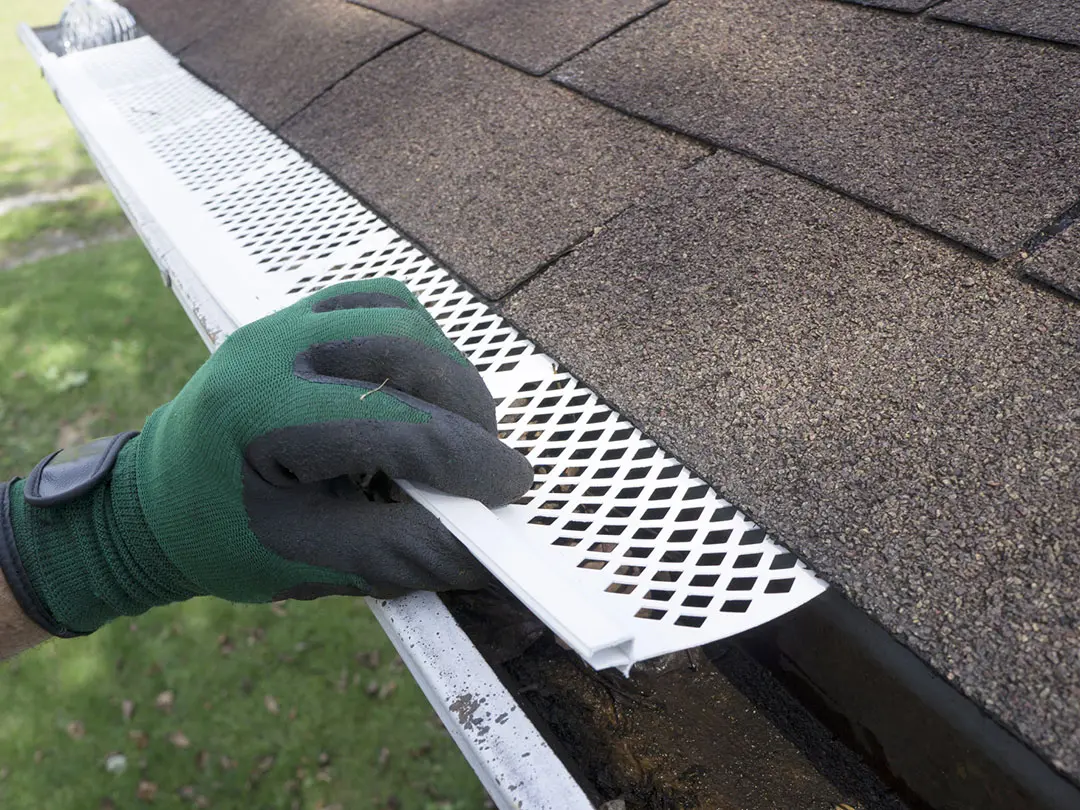
Tampa Bay homeowners know that live oaks, pines, palms, and other broadleaf trees shed in patterns that can clog gutters. Combining local tree debris insights with gutter protection options helps you balance protection with water flow and maintenance. This article lays out the pros and cons of screens, covers, and micro-mesh under live oaks and pines, examining debris patterns, installation angle, cleaning access, water throughput in heavy rain, and maintenance schedule. It guides decisions in gutter maintenance for homes around Tampa Bay.
Debris Patterns in a Tampa Tree Environment
In the fall and winter, live oaks produce acorns and big, leathery leaves. Pines shed cones and needles more slowly throughout the year. Under live oaks, a mat of leaves that obstructs water may form on top of guards or screens. Fine needles can become tangled in the mesh or slip through bigger holes beneath pines, which lessens their effectiveness. Because of the combination of large and small organic debris, our area is frequently better suited for a protection type that manages both. Compared to homes with open skies and less tree cover, those shaded by a dense tree canopy may experience more frequent clogging.
Installation Angles Affect Performance
Protectors that follow the roof slope and align with the gutter slope shed debris more readily. A flat screen or cover with minimal pitch will store leaves until wind or cleaning dislodges them. Micro-mesh guards that incorporate a built-in angle or slope help channel water downward and encourage debris to wash off or slide off. In heavy rain events common to Tampa Bay, a steeper angle means water hits with enough force to bypass minor blockages. When gutters are already full of organic debris, a shallow pitch is vulnerable to overflow.
Cleaning Access for Each Type
Metal or plastic screens are frequently simpler to lift or remove to clean the gutters underneath. Tools may be needed for covers that snap on or integrate under shingles, and they may also block access to roofing supplies. Micro-mesh types can be more challenging to clean or service, particularly if they are clamped tightly or fixed under shingles. Fine particles may clog the mesh surface beneath pine trees, necessitating brushing or pressure washing. A system with removable parts or hinged panels makes it easier for service providers or homeowners to clear out debris without needing to take apart large sections.
Water Throughput During Heavy Rain
Tampa storms bring heavy, unexpected rain. Even when covered in leaves, screen guards with larger holes typically let water flow freely, though some debris may get through and slow the flow. If the volume or slope is high, even covers that deflect large leaves may allow water to drip over the edge. Although water may back up if the mesh becomes clogged or loaded with organic matter, micro-mesh is excellent at filtering both fine and coarse debris while maintaining flow. Proper gutter and downspout sizing is just as important as the type of guard to keep downpours from overflowing even protected gutters.
Maintenance Schedule for Local Trees
Plan to clean or inspect under live oaks at least every three months during periods of high shedding. Even though pine needles are smaller, they can still accumulate over time and should be cleaned or rinsed once every six months, or more frequently if there is a lot of shade or a breeze blows debris onto the mesh. The top surfaces of some screen types might require more frequent attention. To preserve filaments and avoid corrosion (if metal) or damage (if plastic-coated), micro-mesh needs to be cleaned on both the mesh and the support structure. Periodically resealing or checking the fastening of covers may be necessary, particularly following storms. Damage that could impair performance can be prevented with routine inspections following hurricane season or severe winds.
Comparing Types: Pros and Cons Summary
Screen guards are typically less expensive and easier to install or modify. While smaller debris can pass through their larger perforations, larger leaves cannot clog them. Covers can be more costly and more challenging to maintain, yet they can improve the appearance and effectively block large, leafy debris. Micro-mesh offers the most thorough filtering ability, especially in environments with mixed debris beneath live oaks and pines. Higher cost, potential flow reduction if not cleaned, and more complicated installation are the trade-offs. The best option for your home will depend on how well your tree cover, roof slope, gutter size, and rainfall intensity match.
Choosing leaf protection that matches Tampa tree debris helps you maintain your gutters with less stress during heavy rain, reduces the risk of overflow, and prolongs gutter life. Whether you select screen guards, covers, or micro-mesh, consistent evaluation and a cleaning schedule will guard against performance decline. For homeowners seeking professional guidance in choosing and installing protection that fits under live oaks and pines, you may benefit by working with MD Seamless Gutters to ensure gutter maintenance meets local demands and delivers lasting protection.
Picture Credit: Depositphotos


